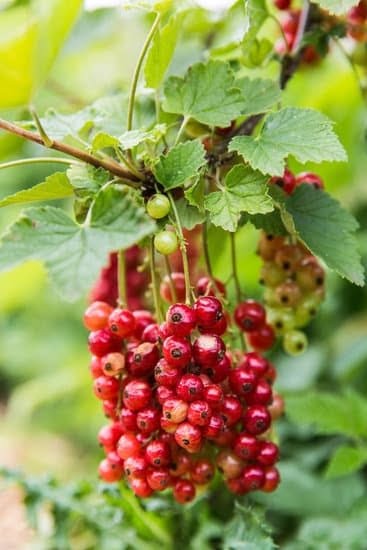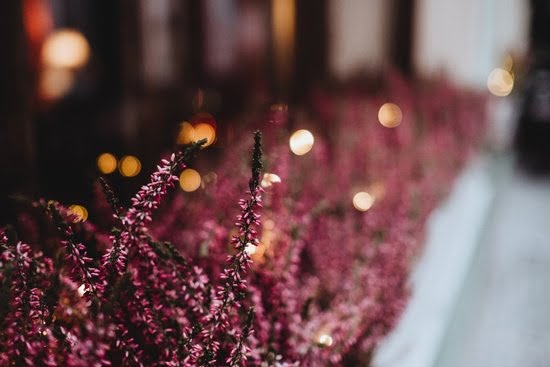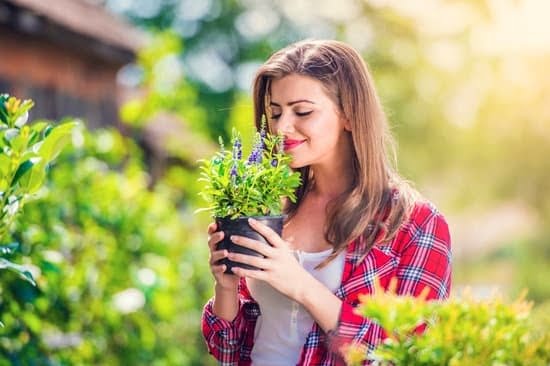Introduction
Square Foot Gardening is an easy, efficient and economical way to create a garden that has maximum yields in minimal space. The concept involves devising a small raised garden that measures 4×4 feet in size and then subdividing it into “square-feet” grid sections. Each section can then be planted with either one or multiple plants. This allows for optimal use of resources as each plant variety can fit perfectly into each of its designated “square-foot” sections, creating a tidy and organized garden layout and saving space.
The benefits of Square Foot Gardening are numerous: it’s low maintenance, it uses fewer resources such as water, fertilizer and soil, weeds are easier to control due to the small growing beds, there’s better drainage since the soil is raised up higher than the neighboring ground, and you never have to worry about overcrowding your plants because each one gets its own specific area. Additionally, it’s often easier on your back as you don’t have to bend over while weeding and picking fruits or vegetables since everything is at waist height. Finally, because of the enclosed nature of Square Foot Gardening (or sometimes referred to as “box gardening), it’s more aesthetically pleasing than traditional gardens.
What is Square Foot Gardening?
Square foot gardening is a technique of growing fruits, vegetables, and herbs in small raised beds while dividing them into sections of one square foot. This method increases productivity in a garden by combining intensive planting with raised beds and square foot divisions of each bed to maximize yield. Each square of soil contains only one variety of plant that can be kept strictly organized with companion planting agreements within the square. The intensive layout allows the gardener to provide different soil mixtures for each type of vegetation being grown, providing proper nutrition for each plant. Additionally, it greatly reduces the amount of weeding and thinning that must be done throughout the season as well as utilizing organic resources (such as compost) over chemical fertilizers or pesticides. The Square Foot Gardening Planner tool provides a free online resource for anyone following the Square Foot Gardening method to plan out their gardens before investing their time and resources into beginning a garden. It even comes with helpful visuals such as aerial views of the garden plans and 3D models so you can visualize your garden before ever touching dirt or purchasing seeds!
Benefits of Using a Square Foot Gardening Planner Free
Using a square foot gardening planner free can be extremely beneficial for both novice and experienced gardeners alike. This type of planner allows gardeners to strategize their gardening efforts efficiently in order to save time, space and energy while harvesting the most productive yields possible. With this planning tool, users can easily map out plots that take into consideration minimal paths between plants as well as optimal spacing and timing for planting to ensure optimal growth. Additionally, with it’s convenient layout option, many square foot planners also provide recommendations for companion planting in order to promote healthier growth by utilizing beneficial microorganism relationships. Furthermore, by using this kind of planer, gardeners can take advantage of companion planting to reduce pest infestations and the need for potentially harmful chemical pesticides. Finally, compacting gardens into an organized grid of beds with designated rows or sections for certain types of vegetables or flowers provides an efficient growing system that ensures proper irrigation and nutrient distribution.
Advantages of Square Foot Gardening Planning
The advantages of using a Square Foot Gardening Planner are numerous and practical. For example, by using the planner, you can easily create an efficient and organized planting layout for your garden, making sure that each plant has enough space to grow and thrive. Additionally, this method allows you to more accurately predict how much soil amendment, fertilizer and water you need for each specific area of the garden. Finally, by utilizing the four-square foot pattern, once planted properly you can expect consistently great yields from your garden. Additionally, this organization also makes it easier to manage pests as they are less likely to cross barriers placed between plants due to the structure of a square foot garden plan. Moreover, because seeds are densely planted in this fashion – with fewer overall plants grown – you’re more likely to achieve maximum yield since all plants can receive ample amounts of sunshine and access water resources quickly which encourages their growth.
How to Set Up and Implement a Square Foot Garden Planner Free
The goal of the Square Foot Gardening Planner Free is to create simple and efficient gardening plans that can be used by anyone. To begin, decide on the type of garden you wish to build; consider if there spaceyou have available, the kinds of plants you want to grow, and your overall budget for supplies. Lay out a grid on paper or using an online planner with measurements for one square foot per block. Make sure that each block is evenly spaced with adequate room for growth around each plant.
Next, measure out the area in which you will be planting and narrow down what materials are necessary for creating your garden. Before beginning to purchase soil or other materials, research what type of vegetation will be best suited for your area’s climate and soil composition. When purchasing supplies such as compost, fertilizer, or other gardening aids, pay special attention to any recommendations regarding application procedures and safety measures.
Now it’s time to start putting things together! Begin by prepping each bed frame by adding a layer of weed control fabric beneath the soil along with relevant layers such as sand or gravel if desired. Once complete, add two inches of organic compost around plants according to their depth requirements when covering them with soil. Make sure there’s plenty of drainage underneath each plant by digging holes at least 3-4 inches deep depending on your plant types before planting seeds or starter plants. Water your plants daily but monitor closely to avoid over-watering as this can cause root rot issues in future months. Finally, mulch (using bark chips or hay) around all visible areas while occasionally side dressing nitrogen sources like fish emulsion after 3 weeks post-planting as needed
Once fully planted, keep careful track nutrient intake throughout your garden over time and make notes about how particular plants thrive under various conditions throughout the season alongside regular weeding techniques like pulling/digging out shallow surface weeds during mild seasons in combination with spot chemical treatments when needed thorough harsher weather patterns throughout the year . By implementing these steps into your gardening practices you will soon find yourself being rewarded beautiful bounty from your Square Foot Garden Planner Free week after week!
Essential Tools and Materials to Get Started
In order to get started with a square foot gardening plan, you’ll need some essential tools and materials. First, you’ll need to choose between raised beds or in-ground beds as your main planting area. For raised beds, you can use wood, stone, plastic or a combination of materials to construct your boxes. If you are opting for in-ground gardens, you will need a good tiller for tilling the soil prior to amendment preparation. You will also need manure and compost for amending the soil along with fertilizer for fertilizing cycles throughout the growing season. Additionally, you’ll need quality seeds or seedlings which are suitable for the soil type and climate you have as well as water containers like hoses and other tools that make watering easier. To keep pests away from your plants, pest repellents such as diatomaceous earth will be useful. Finally, accessories like bird feeders are optional but can add aesthetic appeal to help make it a pleasant area to garden in while attracting friendly wildlife!
How to Maximize Harvests with Your Square Foot Garden
Square foot gardening is a great way to maximize harvests in a small area. The concept involves dividing the square footage of your garden space into sections measuring one foot by one foot, and then planting an appropriate number of plants in each square. By allowing only a certain number of plants per square, the plants are able to get adequate space for their root systems and far more air circulation than traditional row gardening. This leads to better soil aeration, fewer pests and diseases, healthier plants, bigger yields and even less need for weeding.
Using a Square Foot Gardening Planner Free is a great way to ensure you are getting the most out of your square foot garden. Start by making a plan that divides your available gardening space into grids of one-foot squares. Consider what types of produce you would like to grow considering which types do best in the environment you have, such as direct sun or shade. Then decide how many of each type you will be able to fit into each square by looking up recommended plant spacing requirements—the space between the centers of two adjacent plants—for that particular vegetable or flower on an informational website or catalog entry since different kinds require different spacing levels. Finally, mark each type in its designated spot with something visible such as sticks or flags so that you don’t accidentally overplant any squares by forgetting how many were already marked off for one kind of plant. The planner can also help keep track of when and how much nutrients should be added so that your harvest will stay healthy throughout the growing season!
Designing a Square Foot Garden Layout
Creating an effective Square Foot Garden layout can be a tricky process, but with a bit of planning and strategizing, you’ll be set up for success. First, decide on the space that you will use. Consider factors like sun exposure throughout the day, wind shelter, water drainage needs and access to entry points like gates and walkways. Next, measure the area and create a sketch of your garden on paper or with a gardening planner program like Square Foot Gardening Planner Free. This program allows you to easily plug in your measurements and crop preferences while helping you see which plants will do the best in your garden’s current setup. Ideas from other square footers can also serve as helpful inspiration. Finally, think carefully about how much time you want to spend tending to your garden each week so that you can adjust the number of plants accordingly. With these considerations in mind, begin planting your seeds or starter plants responsibly according to their instructions for spacing and other necessary details!
Tips for Planting in Your Square Foot Garden for Optimal Results
When planting in a square foot garden, it is important to plan carefully for optimal results. First, take into consideration the types of plants you want to grow and select varieties that will thrive with the amount of sunlight that your garden receives. If you plant vegetables such as tomatoes or peppers, select varieties that are suitable for your climate and amount of light, as they often require more sun than other vegetables. Make sure to pay attention to when each vegetable should be sown and remember to rotate crops year after year between members of the same family (e.g., don’t plant cucumbers in the same place twice).
If you would like to use companion planting in order to increase yields while also taking care of natural pest control issues, planning ahead is essential. Consider what fruits or vegetables neighbor well together, such as marigolds planted near tomatoes which repels pests. Lastly, when using a Square Foot Gardening Planner – make sure you leave at least 2-3 inches between your rows so that cultivating around your plants can be easily done throughout the season – ensuring optimal growth for both vegetables and flowers. Additionally, good spacing will also aid in pollination by promoting air flow through flower gardens.
Reaping the Benefits of Square Foot Gardening
Square foot gardening is a great way to save time and effort while still producing ample amounts of produce. By using a square foot gardening planner, anyone can easily design a garden that meets their needs and fits their budget. Not only does it offer convenience but it also offers some amazing benefits such as increased yields, reduced water consumption, better overall soil health, improved pest management and easier weed control. Square foot gardening allows you to give specific attention to every single plant in your garden, making sure each one gets the care and nutrients it needs to thrive. With mindful planning of your square-foot garden, you can have fresh vegetables year-round with very little effort! Additionally, if space is an issue for you, then square foot gardening is ideal for small gardens or balconies because it uses the area efficiently by dividing it into adjacent squares for different plants. As a result, you don’t have to worry about overcrowding or competing for light and resources with your neighboring plants.
Summary
Square Foot Gardening Planner Free is the perfect tool for any gardener looking to unlock the potential of their square foot garden. With an interactive map, users can easily select different plantings, plan their gardening area and set up reminders for timely tasks. Easy to use and visually stunning, Square Foot Gardening Planner Free makes planning your square foot garden a breeze. It also allows users to customize their gardens with filters and plant suggestions that match their personal tastes and preferences, ensuring that each garden is tailored to every individual’s needs. Additionally, this planner provides helpful tips and guidance on things like improving soil fertility, implementing pest control measures, selecting plants for optimal growth potential, harvesting techniques, and more. With all these features and more, Square Foot Gardening Planner Free helps any gardener reach their greatest gardening potential in an organized way.

Welcome to my gardening blog! I am passionate about plants and enjoy sharing my knowledge and experiences with others. In this blog, I will write about everything related to gardening, from tips on how to get started to updates on my own garden projects.





